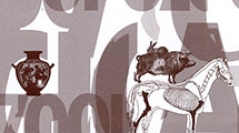

 Anthropozoologica
44 (1) - Pages 189-209
Anthropozoologica
44 (1) - Pages 189-209About sixty lions’ statues were discovered in Mesopotamia at the gateways of the temples from the 3rd to the 1st millennium and at the gateways of the palace in the 1st millennium. This continuity proves a Mesopotamian origin of this subject. In the archaeological excavations were discovered lions in clay, stone and copper but in the texts are mentioned also lions in wood as well as other animals which guard the entry. These animals served to protect gateways because as passage between divine and human world they are considered as dangerous. If lion is the most common animal to protect gateways in the three millennia of Mesopotamian history and for so many different divinities, this is for its intimate character, its strength and its ambiguity. People are afraid by lion for attacking cities and animals, but they used it for magical potions to keep away dangers from men. Even today there are lions at the gateways of some European houses.
Mesopotamia, lions, gateway, magic protection, divinity, king.